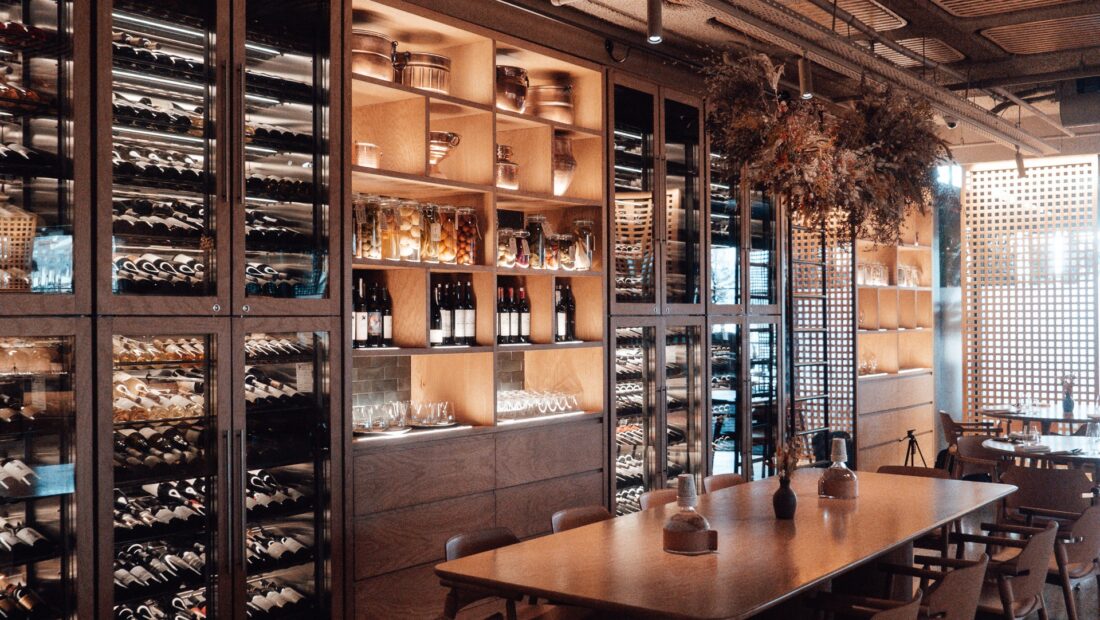Wine Coolers What You Should Consider First
Things to consider when buying a wine cooler
If you are planning to own a wine collection or you already do, then it is important to store them properly. Wine requires certain conditions that will ensure the quality and taste are preserved. Many wine collectors have cellars or cabinets for keeping their wine, but not all own a cooling unit. This is something we can incorporate to your kitchen design and installation.
No matter how state-of-the-art your wine cellar might be, you still need to get a cooling unit. This is because the humidity and temperature are constantly changing and even a powerful air conditioning unit cannot maintain the proper room conditions.
These cooling systems come in different types, shapes, and features. Hence, choosing one can be somewhat challenging. Therefore, we have compiled this guide to show you the basic things to consider as you head out to make your selection.
But before we go full swing into that, let us explain what cellar cooling systems/units are…
What a Cellar Cooling Unit is
A wine cellar cooling unit is a specially designed system that functions to maintain the desired and required humidity and temperature conditions for cellars, cabinets as well as other special refrigeration usages.
When it comes to storing wine, a particular humidity and temperature range must be maintained. 50 to 59°F is the optimal temperature range and 50 to 70% is the best humidity range for storing wine. When stored in this manner, the aging process is not disturbed which allows you to get the best wine quality and taste.
Types of Cooling Systems
For you to make the right choice, you need to know the types of cooling systems that are available. Therefore, we will briefly discuss the three types available as well as their pros and cons. This will allow you to determine which one suits your needs the most.
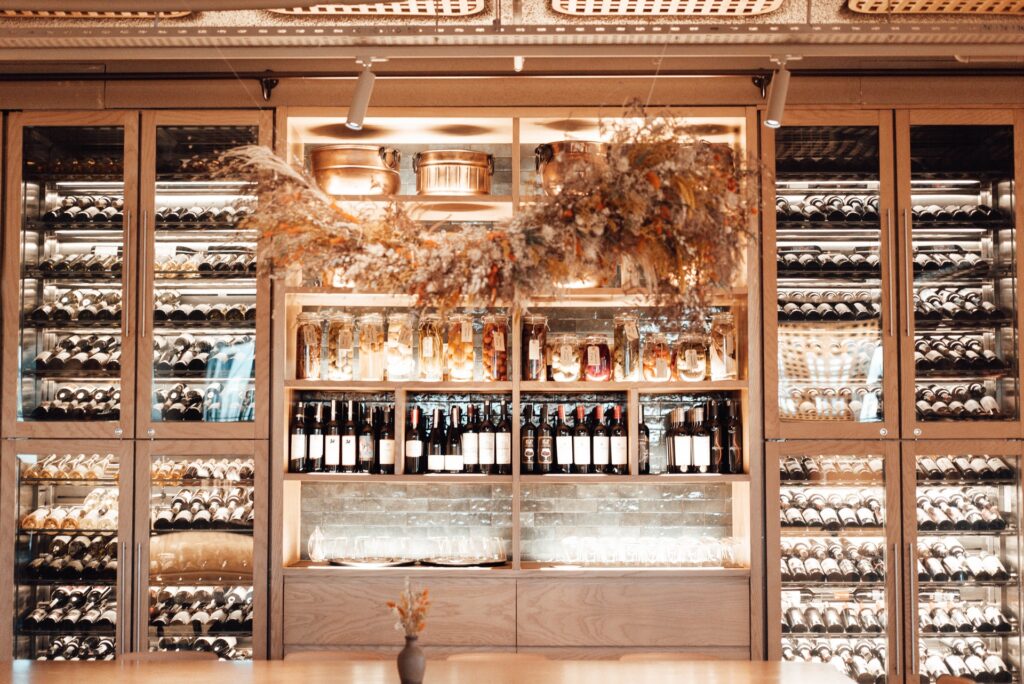
1. Self-Contained
This cooling unit is designed to stand alone. It has a resemblance to a typical AC unit placed beside a window. This is why its other name is “through-the-wall” system because you can install it by mounting and venting it through your walls.
It is the most affordable of the three types of cooling systems. This is one of the reasons it is the most popular as well. Hence, you can keep your wine cool with a unit if your budget is limited or your wine cellar is small.
Another reason it is popular is because of its easy installation process and maintenance. The installation is so easy and quick that you can do it yourself without hiring a technician. Hence, you get to save money in the process.
The reason the installation is so easy is because of the compacted design as the condenser and evaporator are housed in one structure. Furthermore, it doesn’t have any refrigeration lines or ductwork.
If you choose to go for this unit, then make sure the ventilation that gets to it is more than enough. This will ensure that it functions optimally.
Pros
- Most affordable option
- Very easy to install and maintain
- Requires little renovation to install
Cons
- Suitable for only small cellars
- Noisiest option
- Not aesthetically appealing as it protrudes from the cellar’s wall
2. Split System
Split cooling unit also known as ductless system is perfect for those cellars that lack adequate ventilation. Unlike the unit above, the condenser unit and the evaporator coil are kept separately. The evaporator coil is placed inside the cellar, whereas, the fan, compressor, and cooling unit coils are placed outside your home or in an adjacent room.
The two units (evaporator and condenser) are connected with a refrigeration line or a bendable hose. With this setup, the system enjoys adequate ventilation.
When compared to the other two options, this system has the longest life span and is the most efficient. Also, since the components are kept in different locations, the noise, as well as vibration in your cellar, will be reduced compared to a self-contained system.
Pros
- Can cool large spaces
- Operates quietly
- Installing the refrigerator line requires little access
Cons
- Leaves ecological footprints
- Temperature control requires a different system
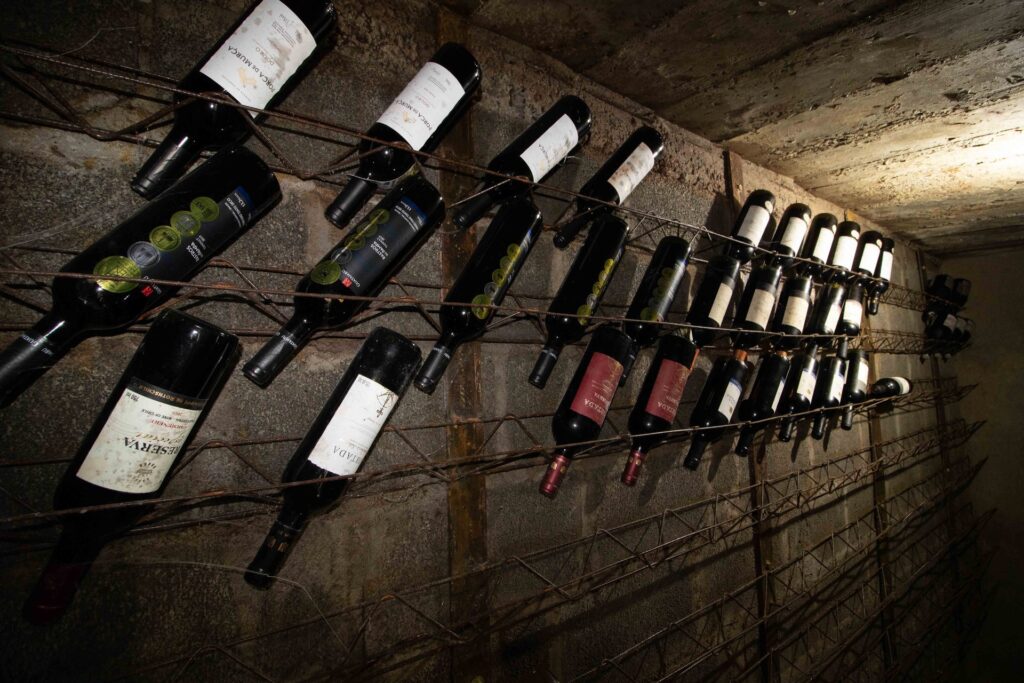
3. Ducted System
This system is ideal for those who cherish aesthetics and wouldn’t want the equipment to stick out of the wall. With this equipment, you can place the unit in a location that is far from the cellar while providing the right temperature and humidity conditions.
The condensers and evaporators are usually placed outside, but they are kept away from the sun. The condenser is then connected to the evaporator using a refrigerator line set. This allows the condenser to supply the air it has gathered from the cellar.
The ducted cooling system is best if you are looking for a subtle design. Furthermore, it produces the least noise and vibrations compared to the other two. Hence, these factors will not affect the collection aging process.
Pros
- Operates quietly
- Perfect for large areas
- Less aesthetic footprint
- Temperature control integration potential
Cons
- Expensive installation
- An HVAC professional is required
- Requires complete access to the ceiling and the walls
Factors to Consider when Choosing a Cooling Unit
Now that we’ve looked at the types of systems available, let us look at the factors to consider before choosing the right one
1. Level of Noise
You must consider the equipment’s noise level. Ask yourself if the unit will disturb your home’s ambiance. As we mentioned, the noisiest type is the self-contained units, with the ducted system being the least noisy.
Most manufactures have been working on this and are producing cooling systems with less noise. Some brands have products that come with top venting that allows the device to operate quietly. Therefore, while noise level is a factor to consider, you can find any of the three types of systems with less noise.
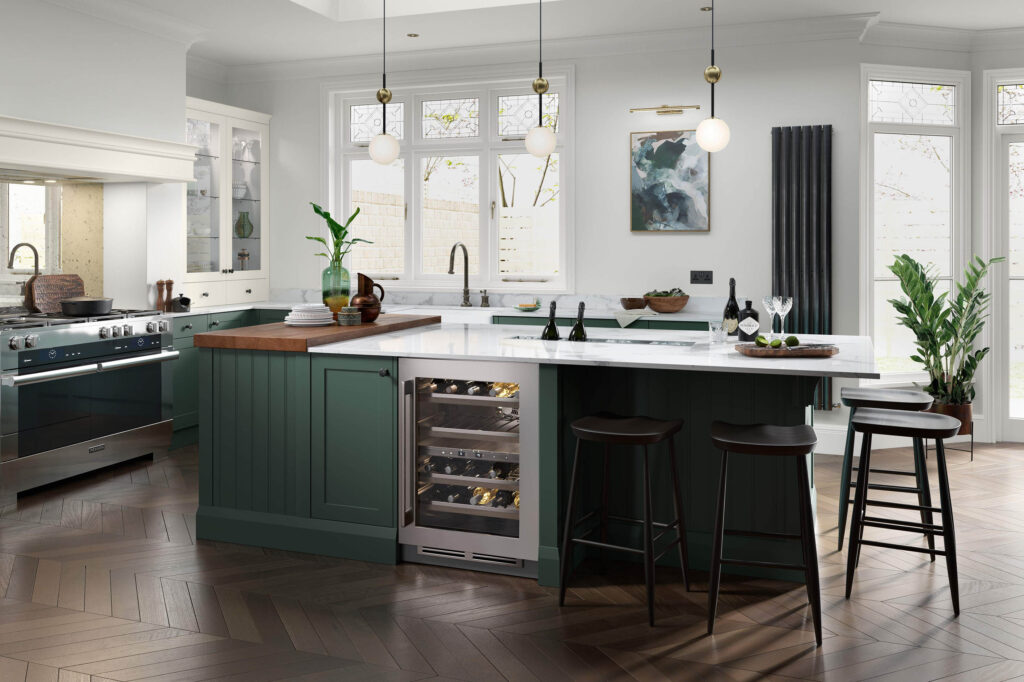
2. Repair Ease
The job of the cooling unit is to ensure that the cellar humidity and temperature conditions are maintained. Therefore, it is important that you choose a unit that won’t break down frequently. Also, if there is a need for any form of repair, it should be one that can be done easily without many complications.
3. Electronic Temperature Control and Digital Display
You need to find out whether the equipment has an electronic temperature control as well as a digital display. With these features, you will be able to monitor the humidity and temperature levels of the cellar to prevent fluctuations that could affect your collection.
4. Upgrades
Choose a unit that has the option for upgrades. Such additional upgrades and options will ensure that the device can provide the best level of performance. These upgrades though will cost you more but the cost is worth it.
If you don’t want to make the upgrades until the equipment arrives, then you can still contact your manufacture to know what upgrades are necessary that must be done before the product arrive. This will prevent the event whereby you want to make an upgrade but it cannot be done after the equipment has been shipped.
5. Humidification Upgrade and Heating Feature
Wine cellars that are located in areas with low humidity would need the humidity level to be increased. If your cellar is in such a location, then you need a system that comes with a humidification upgrade. This upgrade is designed to connect the equipment to your home’s water line so that the humidity level is then maintained in the cellar.
In the same vein, if your cellar is in an area with a low-temperature level, then you will need equipment that will produce heat. Therefore, you need to consider this before settling on a particular device. This will require careful searching as most cooling devices are designed to cool the room and not heat it. Hence, only a few have this heating feature.
6. Installation
As we mentioned above, self-contained units are the easiest type to install with ducted systems being the most difficult. We will quickly explain the installation process for each type so that you can determine which one suits your wine cellar.
Self-Contained
Being the easiest unit to install, you don’t need the help of a technician. However, if you aren’t tech-savvy or handy with tools, then you need to get a professional.
They will open a space in your wall that is a bit bigger than the unit. It is then moved into the space till the back is level to the outside wall. The equipment will be fitted in a way that it sticks out into the wine cellar at 8 inches.
The front is then supported with cellar shelving or mounting clips. Any opening that isn’t covered is then sealed with tape.
Split System
A professional is required to carry out this installation. The unit’s evaporator is first mounted inside the cellar with the aid of brackets. Then it is connected to the unit’s condenser with a refrigerator line set (double copper tubing). The professional will ensure that the refrigerator line set is filled with refrigerant.
After this, the condenser and evaporator are linked using valve controls or wiring which allows the condensate to drain out at the evaporator’s back
Ducted System
This installation required the services of an HVAC professional. Hence, you should not try this yourself because of the technicality of the whole process.
7. Price
We saved this for last as many people only focus on the price of the equipment while neglecting other necessary factors that should be considered.
When it comes to cooling systems, the price is dependent on the following:
- Size
- These units house a particular thermal load that is package in BTU (British Thermal Unit). Hence, a unit with a less thermal load cannot properly maintain the conditions of a large area.
- Power of the unit
- The higher the power capacity of the unit, the more expensive it is.
- Type of system
- Self-contained is the cheapest option, while ducted systems are the most expensive. Hence, the type of device you settle for influences the price.
- Indoor or Outdoor
- Outdoor equipment is more expensive than indoor equipment because of the extra coatings and parts that are added to prevent the effect of weather elements.
- Warranty period
- The length of the warranty also influences the price.
Practical Wine Storage
If you haven’t got a massive wine collection just yet and you’re not looking for a wine cooler. Perhaps all you want is a practical solution for storing your wine and glasses. at newrooms we can design and build the perfect solution for your kitchen
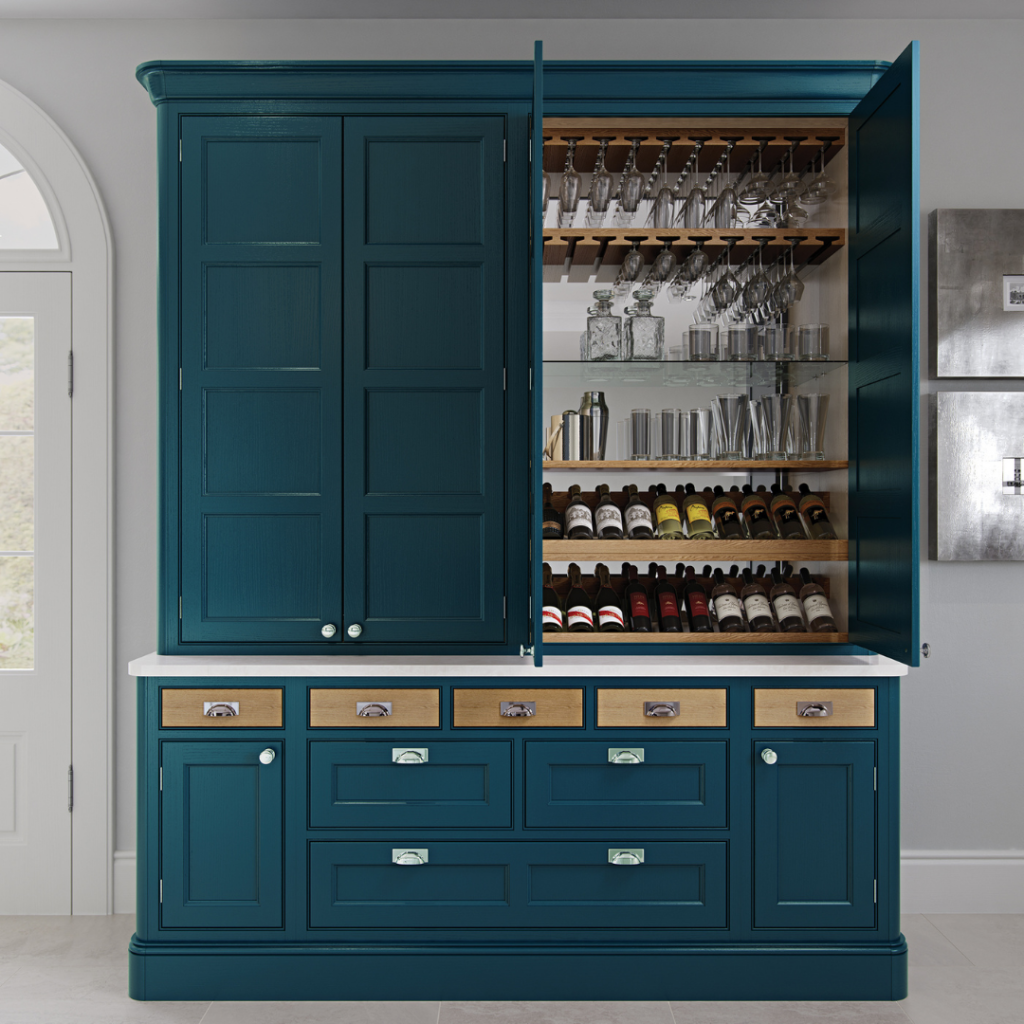
Practical Wine Storage
A place to store everything, a modern day cocktail cabinet with a place for everything drink related

